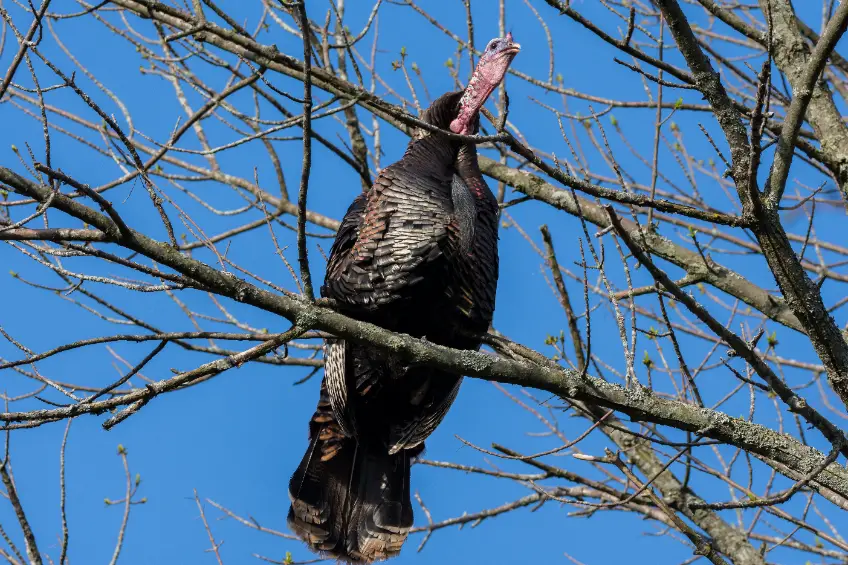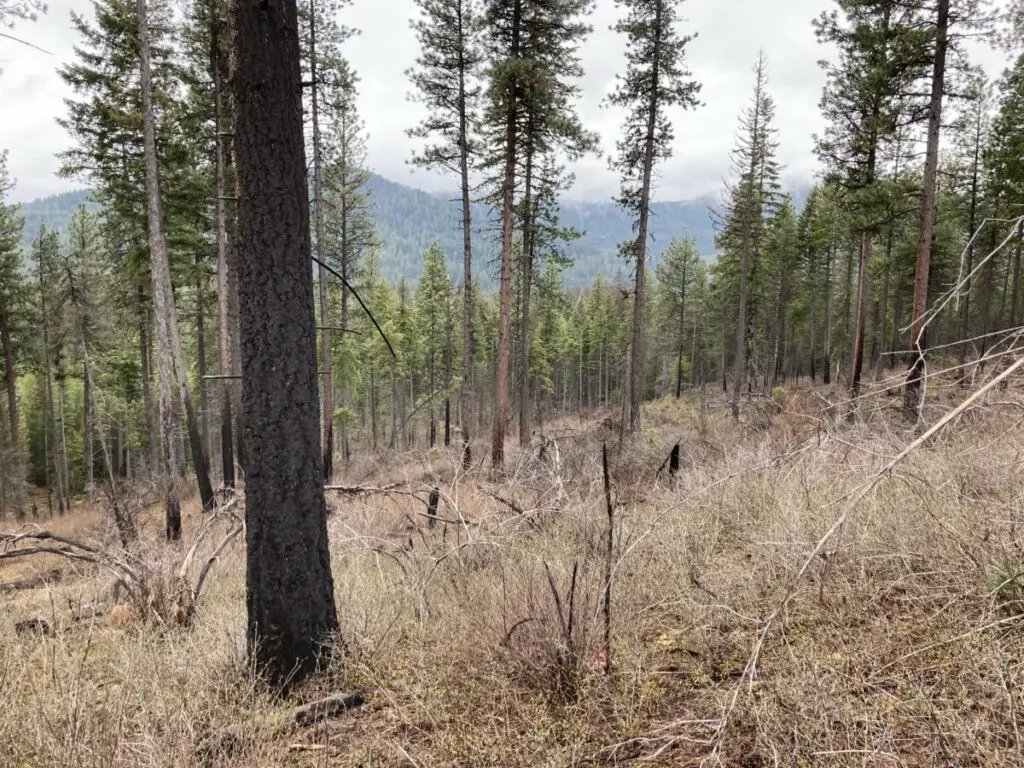
If chasing longbeards in stunning Western country with abundant populations and ample public land sounds appealing, you’ve come to the right place. We’re going to break down everything you need to know so you can experience some of the finest turkey hunting in the country. It’s no longer a secret the timbered mountains of Washington and Idaho are a hotbed for spring turkey hunting.
For many hunters, preparing for such a hunt feels like a daunting task, but putting the puzzle pieces together is easier than you think. The best place to begin your journey consists of a simple Google search to find the state websites detailing regulations, season dates, units, and bag limits.
Besides familiarizing yourself with rules and regulations, each state website provides detailed information on population trends within specific units. Washington is unique in that you can hunt Rio’s in the southeast part of the state, Easterns in western units, and Merriam’s in the northeast corner of the state.
As a general rule of thumb, the Panhandle of Idaho and the northeast corner of Washington hold the strongest turkey populations. You’ll be chasing gorgeous white-tipped Merriam’s in this region, though there is evidence of hybridization. Since the vast majority of hunters will be targeting the Idaho Panhandle and Eastern Washington, we’ll focus on strategies for this area, though many of the same principles hold true throughout the country.
Planning
Finding a place to hunt is typically a major hurdle, but the Pacific Northwest is a true gem because turkeys are found throughout the abundant national forests in both states. Don’t overlook lands owned by timber companies either, as they often permit public hunting on large pieces of property…just a bit of research could put you on a pile of unpressured birds.
When you’re in the process of e-scouting, there are a few features you’ll want to hone in on. Try to locate areas with some sort of disturbance such as natural openings, recent clearcuts, and logging roads. Don’t invest too much time in picking super specific areas such as one creek bottom or one clearcut, but instead use your e-scouting to find spots where you’ll be able to listen for gobbles over big chunks of land. Understanding topo maps is critically important and could save you a ton of headache later on.

You’ll want to pay close attention to different access points, elevation changes, and timber habitats. Fortunately, most mapping apps, such as onX Hunt, provide detailed information and aerial views you can interpret to get an idea how thick the timber is. There is plenty of dense, impenetrable forest here and you want to try to eliminate those particular options as the birds prefer habitat they can see and move through easily. And don’t handcuff yourself by only picking one or two potential areas – give yourself plenty of options so you can keep moving until you find birds.
Both Washington and Idaho have long spring seasons – this means weather can be a huge factor. Hunt too early and you might get caught in a spring blizzard. Hunt too late and you might do battle with high heat and turkeys that have heard every call on the market.
As a general rule of thumb, early to mid-May is an ideal time to hunt. The ability to tailor the adventure to your individual taste further establishes Washington and Idaho as premier destinations. Sleeping in your truck, tent camping, or renting an Airbnb are all options. You could even turn it into a backpack hunt if want to dial up the adventure factor. With so much national forest, you’ve got virtually unlimited options for camping.
So you’ve done the homework, bought your licenses and tags, and you’re ready to put boots on the ground. Here’s where your e-scouting and hunting strategy merge to put you in the driver’s seat.
Strategies in the Field
Laying eyes on turkeys is always a huge advantage, but this is an audio-driven pursuit in heavily timbered country. While you always want to keep an eye out for sign, do yourself a favor and allow your ears to steer the ship. This is big country and you want to use your e-scouting intel to cover ground as efficiently as possible without physically wearing yourself out.
Use your previously noted access points, logging trails, and elevation features to position yourself to listen from high points over large areas. Once you pinpoint gobbling turkeys, then it’s time to make a move and attempt a setup. When you see or hear turkeys, note the elevation and try to establish a pattern. And if you see turkeys on private land, don’t be afraid to knock on a door and ask for permission.
Many landowners here view turkeys as a nuisance and will readily grant permission. And if you love a hot tip, keep this in mind – you might find more recreational users in this part of the country, such as campers, hikers, and fishermen. Don’t assume every vehicle and camp is another turkey hunter…in fact, non-turkey hunters will often have insight into where they heard gobbling birds.
Never be afraid to strike up a conversation as these can be some of the best leads out there.
Gear
(Pinetrees and solitude may earn a commission from affiliate links in this article.)
Most of your gear, such as your favorite shotgun or bow, calls, decoys, and clothing, will remain the same but there are a couple of things to keep in mind – lighten the load where possible so you’re ready to move. It’s not uncommon to hear a bird in these mountains and find yourself miles from the truck after a couple of hours.
Leave the knee-high rubber boots at home and bring a pair of broken-in hikers. Your old familiar vest will work just fine, but this is the perfect place to try a lighter approach, such as a chest rig or fanny pack. Whichever configuration you pick, don’t head into the field without water and a basic first aid kit. Many hunters also carry bear spray or a sidearm due to the presence of big predators including wolves, bears, and mountain lions.
While an encounter is unlikely, always keep in mind who else lives out there. If you like to crank up the volume with your calling, Washington and Idaho are the place for you. Box calls, glass calls, and coyote howlers are ideal when you need to cast a call to strike up a distant longbeard.
Once you’ve got a gobbler on the way, your standard diaphragm calls and slate calls are perfect for working the bird within range. With the possibility of ending up miles from the nearest trail, a turkey tote or vest with room to carry a bird can be a lifesaver. Carrying a bird out by the feet isn’t a big deal when you’re hunting the back forty, but it gets old quick when you’ve got three miles to go in steep terrain.
Both Washington and Idaho require notching and attaching tags in the field. To transport your birds, you’ll need the fully feathered head and beard left intact in Washington. In Idaho, you’ll need to keep the beard or leg naturally attached for transport.
Be sure to pack a big enough cooler and ice to cool down any meat. And if fried turkey breast back at camp sounds appealing, bring a pan and your favorite seasonings. You’ll not only be eating the finest meal in a grand setting, but you’ll have less meat to keep cold or frozen on the way home. Speaking of the trip home, your mind will likely be racing on how to get back to Washington and Idaho once you get a taste of what these states offer each spring.
The “good old days” are truly right now in the Pacific Northwest and you’ve got a headstart on how to put yourself in one of the top destinations. Don’t let another spring slip by without experiencing it for yourself firsthand.
State Links:
Washington Department of Fish & Wildlife
If you enjoyed this article, check out these articles from Pinetreesandsolitude.com:
- 3 Tips For Hunting Western Turkeys
- Where To Find Turkeys: Tips For This Season
- What’s The Best Turkey Call? Top Picks
(This article was originally published on Pintreesandsolitude.com. If it is now published on any other site, it was done without permission from the copyright owner.)
